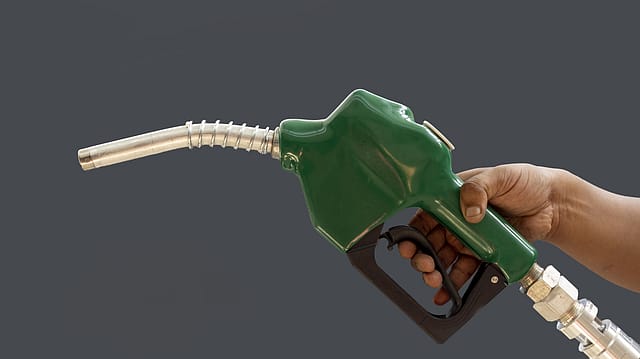Oil stocks tank up to 8% after cut in petrol, diesel prices; HPCL, BPCL, IOCL, GAIL, ONGC lead fall
ADVERTISEMENT

Oil stocks, especially state-owned oil marketing companies (OMCs), witnessed sharp selling on Friday after the government cut prices of petrol and diesel for the first time today in two years. The sell-off was triggered as Indian oil refiners and marketers face a double whammy of decline in fuel prices domestically and higher international crude oil prices, which are likely to impact their margins.
International crude oil prices climbed to a five-month high on Thursday after the International Energy Agency (IEA) revised its demand growth forecasts upward for 2024 and reduced its projection for non-OPEC supply due to disruptions in the Red Sea region. Currently, Brent crude oil futures for May are quoting at $85.27 per barrel, after hitting an intra-day high of $85.53, its highest level last seen in November 2023. The West Texas Intermediate (WTI) crude oil was at $81.15 per barrel.
Reacting to the rate cut announcement, shares of Hindustan Petroleum Corporation (HPCL) fell as much as 8% in opening trade on Friday, followed by Bharat Petroleum Corporation (BPCL) which dropped up to 6%. Among other OMCs, Indian Oil Corporation (IOC), Oil and Natural Gas Corporation (ONGC), GAIL (India) lost in the range of 3-5%. Indraprastha Gas (IGL) and Petronet LNG were also trading lower, down up to 1%.
January 2026
Netflix, which has been in India for a decade, has successfully struck a balance between high-class premium content and pricing that attracts a range of customers. Find out how the U.S. streaming giant evolved in India, plus an exclusive interview with CEO Ted Sarandos. Also read about the Best Investments for 2026, and how rising growth and easing inflation will come in handy for finance minister Nirmala Sitharaman as she prepares Budget 2026.
Among private players, shares of Reliance Industries dipped as much as 0.7%, while Adani Total Gas slipped up to 1%.
In an overnight development, oil companies announced a slash in petrol and diesel prices across the country by ₹2 per litre, effective from March 15 at 06:00 am. The price cut comes ahead of the Lok Sabha elections this year as Prime Minister Narendra Modi looks to extend his decade in power with a rare third term.
Last week, the Union oil minister nudged city gas distribution (CGD) companies to lower CNG prices by ₹2.5 per kg and the Union government cut LPG prices by ₹100 per cylinder.
Rate cut to impact margins
The cut in petrol, diesel, and CNG prices are likely to result in OMCs’ gross marketing margin (GMM) declining to ₹2.2 per litre on diesel and ₹3.5 per litre on petrol, resulting in blended auto-fuel GMM of ₹2.6 per litre (versus historical GMM of ₹3.5 a litre), according to analyst at JM Financial. This is based on the spot Brent price of $85.2/bbl and actual product cracks of around $18/bbl for diesel and $14/bbl for petrol.
JM Financial in a report says the cut in auto-fuel price by ₹2/ltr is negative for OMCs’ share prices as the Street was not expecting a fuel price cut after a fiscally prudent Union Budget, the expectation of a strong mandate for the current ruling government, and the delay in a fuel price cut until now (the model code of conduct could come into effect anytime in the next few days with announcement of dates for elections in AprMay'24).
“However, the extent of damage has been partly curtailed by ensuring that the fuel price cut is limited to only ₹2/ltr (and not let's say ₹5/ltr as was speculated in the press in the last few months) resulting in their GMM declining to only ₹2.6/ltr (from their historically sustainable GMM of ₹3.5/ltr), resulting in marketing EBITDA of ₹1/ltr (vs. historical ₹2/ltr) and not huge losses (which would have been the case if they had cut prices by ₹5/ltr),” the report notes.
The report highlights that there is a high possibility that OMCs may be allowed to make normal GMM of ₹3.5 per litre post elections, assuming Brent crude price stays within the comfortable zone of ₹75-80 per barrel.
After the strong rally in the last 4-5 months, OMCs’ valuations are trading at 15-25% premium to historical price-to-book (P/B) valuations. HPCL share is trading at 1.4x FY25 P/B (versus historical average of 1.0x); IOCL at 1.4x FY25 P/B (vs. average of 1.0x); and BPCL at 1.6x FY25 P/B (vs. average of 1.3x), the report notes.
The brokerage has maintained ‘SELL’ rating on IOCL with a target price of ₹145) and HPCL (TP of ₹440) and ‘HOLD’ rating on BPCL (TP of ₹565).
The report highlights that OMCs’ fourth quarter earnings will be robust aided by strong gross refinery margins (GRMs) and marketing margin, reiterating that their risk-reward is unfavourable. OMCs reported very strong GRM of $10-20/bbl in FY23 and FY24 (vs. $5-7/bbl historically) driven by record high diesel cracks of $20-35/bbl; windfall tax benefits that accrued because they sourced diesel from standalone refiners; and Russian crude discount adding 2-4/bbl to their GRM.
The agency expects that OMCs’ refining margin will revert to $7.5-9/bbl from FY25 onwards due to normalisation of diesel cracks due to easing supply side concerns and normalisation of Chinese diesel exports. Adding to it, end of windfall tax benefits following normalisation of diesel cracks and the narrowing of Russian crude discounts will also impact margins.
(DISCLAIMER: The views and opinions expressed by investment experts on fortuneindia.com are either their own or of their organisations, but not necessarily that of fortuneindia.com and its editorial team. Readers are advised to consult certified experts before taking investment decisions.)
